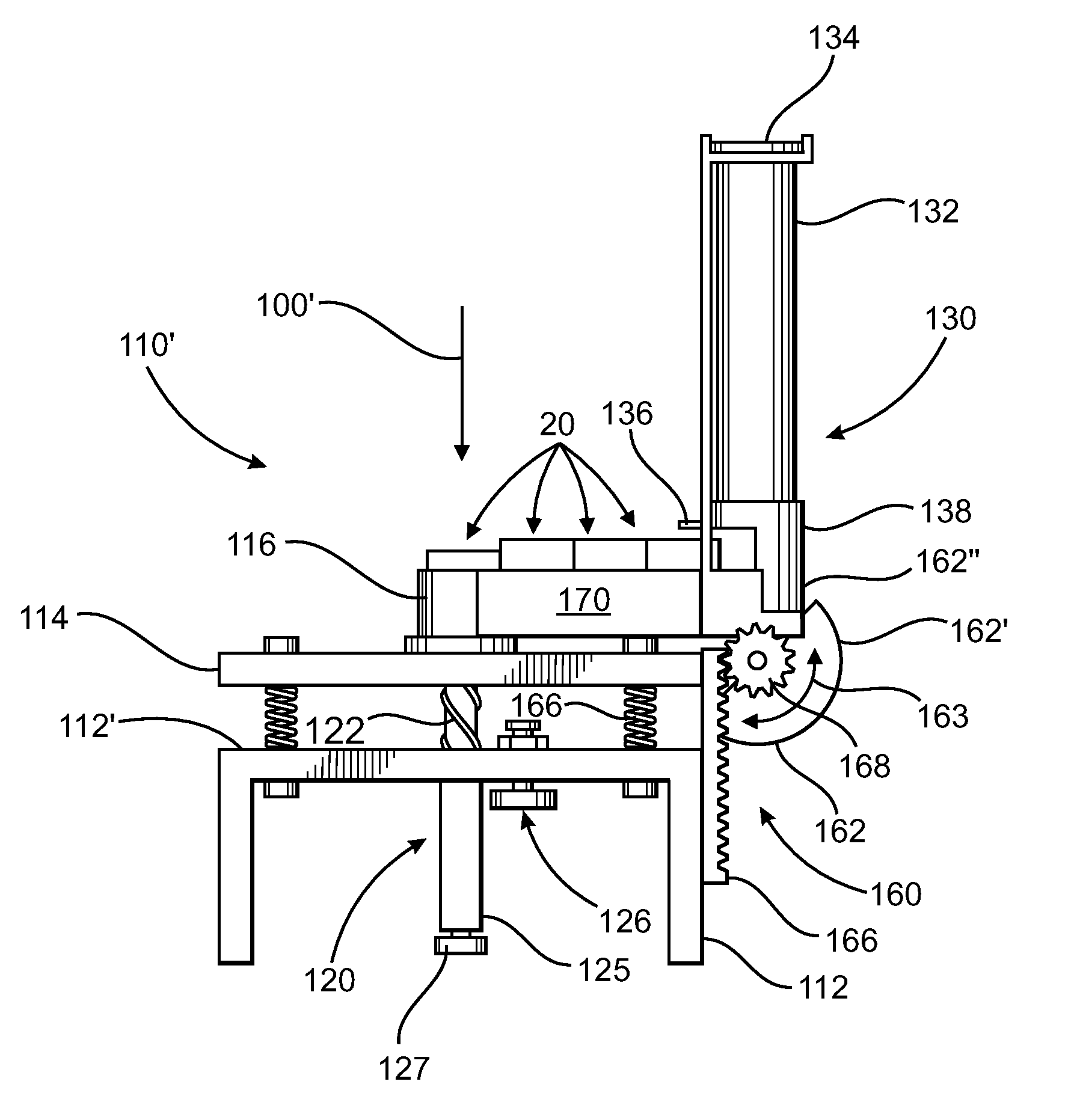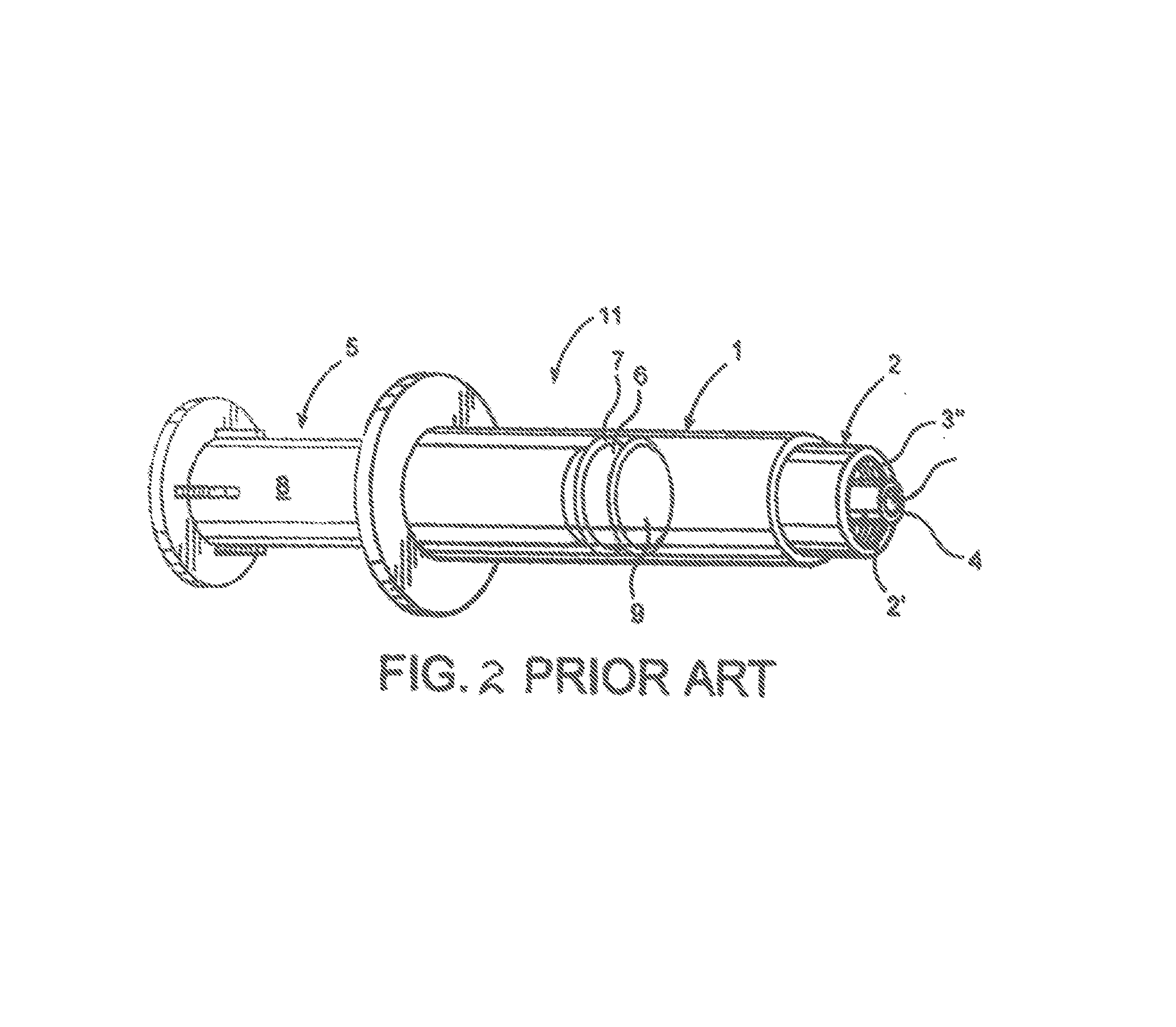Assembly and system for connecting a closure to a syringe
a technology of syringe and closure, which is applied in the directions of application, liquid handling, transportation and packaging, etc., can solve the problems of increasing the chance of syringe contamination, affecting the safety of patients, so as to facilitate the exit of the next closure and facilitate the gravitational feed
- Summary
- Abstract
- Description
- Claims
- Application Information
AI Technical Summary
Benefits of technology
Problems solved by technology
Method used
Image
Examples
Embodiment Construction
)
[0068]As indicated in the accompanying drawings, the present invention is directed to an assembly for closing a conventional syringe 11, such as that shown in FIG. 2 and labeled as “Prior Art,” which in most cases, will be pre-loaded with a drug or medication. The inventive assembly includes a closure, generally indicated as 20, structured for use in combination with a support base 50.
[0069]Before describing the structural and operative features of the present invention, it will be helpful to initially refer to a conventional or standard type of syringe 11, such as that shown in FIG. 2, in order to offer some understanding of the environment in which the present invention will operate. As such, and as shown in FIG. 2, the syringe 11 typically includes a barrel 1 and a nozzle structure 2. The barrel 1 comprises an elongate interior chamber disposed in fluid communication with an axial passageway or channel 3 on the interior of the nozzle portion 2′. Also, the nozzle portion 2′ may c...
PUM
 Login to View More
Login to View More Abstract
Description
Claims
Application Information
 Login to View More
Login to View More - R&D
- Intellectual Property
- Life Sciences
- Materials
- Tech Scout
- Unparalleled Data Quality
- Higher Quality Content
- 60% Fewer Hallucinations
Browse by: Latest US Patents, China's latest patents, Technical Efficacy Thesaurus, Application Domain, Technology Topic, Popular Technical Reports.
© 2025 PatSnap. All rights reserved.Legal|Privacy policy|Modern Slavery Act Transparency Statement|Sitemap|About US| Contact US: help@patsnap.com



